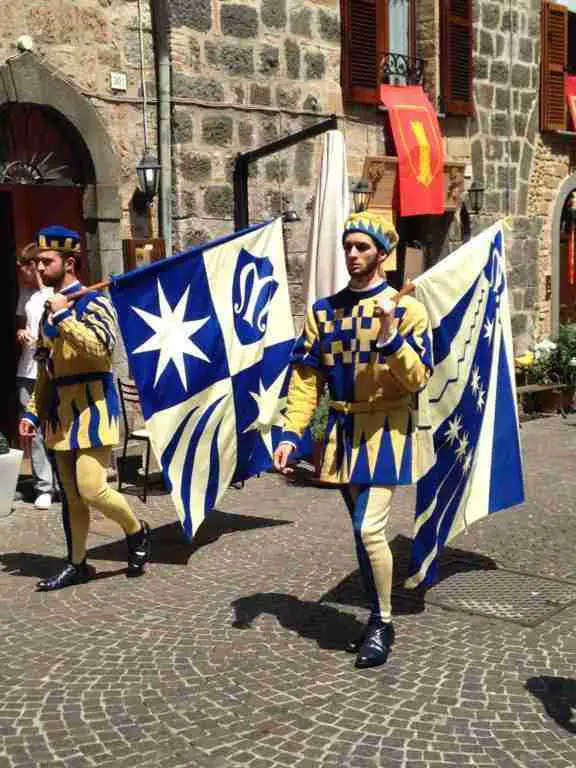Umbria Travel Guide
Umbria calls itself the “Green Heart of Italy.” It’s a perfect name for this central, landlocked region of picturesque, medieval hill towns, rolling green farmland and forests.
Perugia is the capital of Umbria.
Umbria Map
Umbria borders Tuscany and Lazio, making it ideal for day trips and weekend escapes from Florence and Rome. It also borders the region of Le Marche.
When to Go to Umbria
High season in Umbria tends to track with the same in Tuscany and Lazio given that many travelers come to this region on day trips or short visits from Florence and Rome. But the throngs are never as thick here as they can be in those other destinations.
Weather in Umbria
Late spring and early fall are the best times to visit Umbria for mild, pleasant weather.
Umbria really shines in the fall when it’s able to showcase its earthy cuisine of roasted meats, cheeses, porcini mushrooms, and truffles. It just feels good to settle into a cozy Umbrian restaurant when the air is cool and the days are getting darker. Fall weather ranges from highs in the mid-70s to low 50s °F (24-12°C) in September; mid-60s to upper 40s °F (19-9°C) in October; and low 50s to high 30s °F (12-4°C) in November.
The region begins to get very cold in December and it stays steadily cold throughout the winter. Perugia in December ranges from an average high of 46°F (8°C) to a low of 33°F (1°C). Average highs in January and February are about the same as December (mid-40s°F/7-8°C), but the daily lows are around freezing or just below. It snows in Umbria and winter also it is often foggy.
In spring, daily high temperatures gradually increase from the mid-50s °F in March to the low 70s °F in May (14-22°C). Morning and overnight temperatures in spring remain low during March and April, ranging from the mid-30s to low 40s °F (3-7°C). Average low temperatures in Umbria in May hover around the upper 40s to low 50s °F (8-12°C).
June, July, and August are the busiest and hottest months to visit Umbria. But the days are generally cooler here than in Tuscany and Lazio, owing to the fact that many tourist sites are located in hill towns. Average June highs in Perugia are in the upper 70s to low 80s °F (25-28°C), while July and August see high temperatures in the mid- to upper-80s °F (29-30°C).
March and November are typically the rainiest months in Umbria.
Festivals and Events in Umbria

Umbria hosts numerous events that merit a visit.
Assisi welcomes spring each year with an event in May called Calendimaggio. Featuring medieval games like archery and duels and a costume parade, Calendimaggio begins on the first Wednesday of May and lasts through the weekend.
The Festa dei Ceri, held each year on May 15, is the biggest event in Gubbio. The highlight of Gubbio’s Candle Festival is the medieval candle race, in which costumed participants race up Mount Ingino carrying enormous wooden candles.
In June, Orvieto celebrates the Feast of Corpus Christi, a religious procession and festival that originated in the town in 1264.
Also in June and July (but sometimes later in the summer), Spoleto hosts the Festival of Two Worlds (Festival dei Due Mondi). This arts and music festival attracts big name talent and visitors from around the world.
The beginning of October it’s back to Assisi, but for religious reasons. October 4 is the feast day of Assisi native a Saint Francis. The solemn, yearly event begins with a pilgrimage from Porziuncola to Saint Francis Basilica on October 3. As Francis is the Patron Saint of Italy, the occasion brings dignitaries to the Umbrian town to present oil for the eternal flame outside Francis’s tomb.
October is also the month when Perugia hosts Eurochocolate. This chocolate festival in the hometown of Perugina began in 1994.
Gubbio gets the spotlight again in December when it lights the World’s Largest Christmas Tree.
Traveling to and Around Umbria
Many who visit Umbria opt to drive, as its notable sights are fairly spread out. Highways and small roads in Umbria are well-maintained.
But parking in cities can be tricky because of narrow roads and ZTL restrictions. Perugia and Orvieto, for example, have car parks on the edge of town to reduce pollution and preserve walkability.
Umbria is served by regional trains, not high-speed ones. But there are frequent connections to Perugia and Orvieto from Florence and Rome. Slow train travel is recommended if you have time to spare. You will save money and you will be able to enjoy the view while you relax.
Perugia San Francesco d’Assisi Airport (PEG) is Umbria’s small international airport.
Where to Go in Umbria

Assisi, the home of Saint Francis and his namesake basilica, is the most popular place to visit in Umbria.
Orvieto, with its spectacular Gothic cathedral, is a popular day trip from Rome.
Both Assisi and Orvieto are hill towns. Umbrian hill towns also include Gubbio, Montefalco, Spello, Spoleto, Todi, and Trevi.
Best Tours in Umbria: Day Trips and Longer Stays
Consider one of these private or small group tours to get the most out of your visit to Umbria:
- Top Umbria Tours – Viator. The most popular tours and day trips in Umbria from a variety of licensed guides.
- Tour Guide Assisi. Custom tours with expert guide Maura Baldoni.
- Anne’s Italy. Let professional American tour guide Anne Robichaud design your tour in Umbria.
- Concierge in Umbria. This award-winning travel company specializes in personalized luxury tours of Italy and Switzerland. But they are also Umbria experts, with close ties and sources in Perugia and Assisi.
